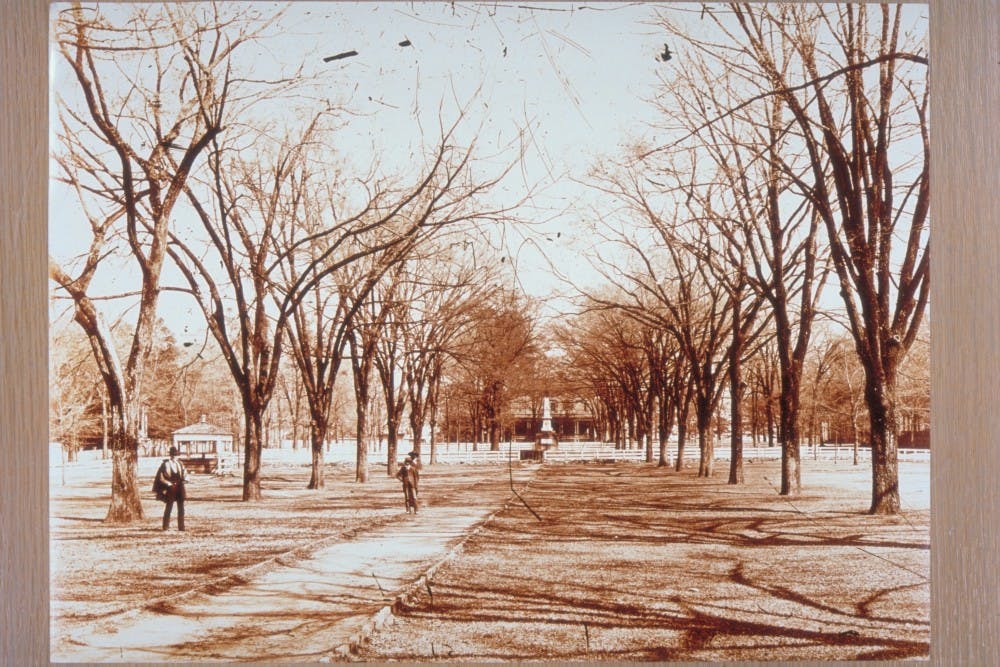The University of South Carolina has more than two centuries of history, traditions and folklore for USC students and fans to participate in.
Cocky
Every student on campus knows USC’s bouncy and enthusiastic mascot Cocky, but he hasn’t always been around. Cocky first appeared in 1980 and had a bit of a shaky start. Before him, students knew Big Spur, a 7-foot tall, imposing gamecock, and didn’t see the need for a mascot who wasn’t intimidating. Big Spur and Cocky were co-mascots for a year before Cocky fully took over the gig, and he has been beloved by students ever since.
Tiger Burn
The Tiger Burn takes place every year during the week during the Carolina vs. Clemson game, when students come together to watch a huge wooden tiger burn before the big game. The tradition began in 1902 after South Carolina football upset Clemson and paraded around with a drawing of a Gamecock crowing over a beaten tiger. Clemson students did not like this, and warned USC students not to carry the drawing in a parade the next day.
Despite the warning, students carried the drawing in the parade, and Clemson prepared to march on campus and forcefully take it away. USC students armed themselves at the Horseshoe and prepared to defend the campus, but authorities arrived and stopped both parties. The event became known as the Carolina Clemson Riot of 1902. In a compromise, South Carolina burned the drawing, inspiring the Tiger Burn and cementing the University of South Carolina as the Fighting Gamecocks.
Barefoot Day
An old USC tradition that does not continue today is Barefoot Day. This tradition began in the late 19th century and ended in the late 1930s. It was centered around seniors hazing freshmen. All freshmen on campus had to wear a freshman beanie, or “rat cap” whenever they were on campus until April. On the last day of the hazing, freshmen, excluding women, had to go barefoot the entire day and do whatever the seniors told them to, such as doing cartwheels or singing a song. This tradition ended when seniors told the men to hug and kiss every woman they saw, erupting a scandal for the university which the president had to investigate, effectively ending the hazing ritual.
Carolina-Clemson Blood Battle
This nearly 30-year-old tradition turns an in-state rivalry into good for the community. Starting at the beginning of the holiday season when blood donations tend to go down, the Carolina-Clemson Blood Battle measures the amount of blood each school donates to the American Red Cross.
Big Thursday
From 1896 to 1959, the Carolina-Clemson game took place at Willy B on the Thursday of the State Fair, bringing in South Carolinians from all over the state for the big event. After 1959, the game began alternating between USC and Clemson so the two schools could both benefit from home field advantage and an economic boost for local businesses.
The Horseshoe
While the Horseshoe has been around since the 1800s, it has not always looked the way it does now. While USC students now enjoy a garden and park space, the area used to be open to cars which would drive through the Horseshoe to get to building parking. The area underwent a massive renovation project from 1972 to 1982 when USC bricked over the asphalt and planted grass to make the area a park for students.
Maxcy Monument
The Maxcy Monument, named after the university’s first president Jonathan Maxcy, is the Horseshoe’s major landmark. The statue was completed before any of the buildings on the Horseshoe in 1827 and serves as a gathering place for students to hang out and meet. The monument is also the source of a lot of student folklore. Contrary to a popular legend, Maxcy and his horse are not, in fact, buried beneath the statue.
"2001" Gamecock Football Entrance
This fiery, smoky and intense entrance of the Gamecock football team before every game gets every person in the stadium hyped up. The entrance was implemented by USC President James Holderman in anticipation of the university’s bicentennial in 2001.

